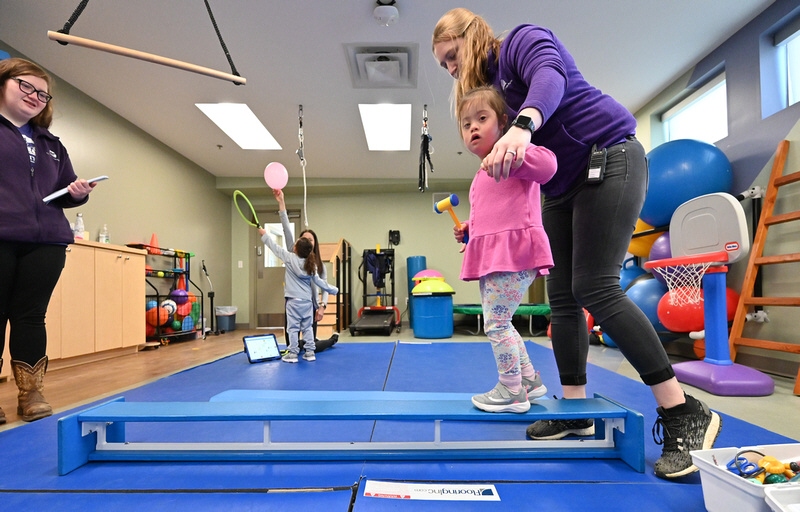Pediatric physical therapy plays a crucial role in supporting the physical development of children. From infancy through early childhood, a child’s body undergoes rapid changes, and physical therapy can ensure that children develop strength, coordination, and mobility in a healthy way. Early intervention is key, as it can help children overcome developmental challenges before they become more ingrained, potentially leading to more significant complications later on. Understanding the importance of pediatric physical therapy in early childhood development can help parents and caregivers make informed decisions about their child’s health and well-being.
What is Pediatric Physical Therapy?

Pediatric physical therapy is a specialized branch of therapy that focuses on treating children from infancy to adolescence. This therapy is designed to address various physical impairments, disabilities, and conditions that might affect a child’s development. Whether the issue is congenital, such as a muscular disorder, or acquired, like a developmental delay, pediatric physical therapy uses tailored exercises and activities to help children achieve or maintain their physical milestones.
Physical therapy for children may address issues such as motor skills delays, weakness, postural problems, or injury recovery. It uses a wide range of techniques, including strengthening exercises, balance training, and therapeutic play, to support a child’s ability to move and function. The goal is always to enhance mobility, prevent future complications, and ensure the child’s overall health.
How Pediatric Physical Therapy Supports Early Childhood Development
Early childhood is a period of tremendous growth, both physically and mentally. A child’s motor skills development, which includes their ability to control their body movements, is directly related to their overall physical development. Pediatric physical therapy helps guide children in achieving essential developmental milestones, such as rolling over, crawling, walking, and running.
1. Strengthening Motor Skills
Motor skills development is one of the cornerstones of early childhood physical development. Pediatric physical therapists work with children to strengthen both gross and fine motor skills. Gross motor skills include actions like sitting, standing, walking, and jumping, while fine motor skills involve more precise movements, such as picking up small objects or using utensils.
Physical therapists develop individualized plans to encourage the use of muscles and joints in the correct patterns, enabling children to achieve these skills. Without early intervention, children may face delays in meeting these milestones, which could impact their physical development and coordination.
2. Supporting Balance and Coordination
Balance and coordination are vital aspects of physical development. A child’s ability to stand, walk, and run with confidence requires proper balance. Pediatric physical therapy exercises often focus on improving a child’s ability to maintain stability and adjust to different environments, such as walking on different surfaces or climbing stairs.
Therapists use various tools, such as balance beams, balls, and obstacle courses, to build strength and encourage coordination. By doing so, they help children not only meet developmental milestones but also increase their confidence in physical activities.
3. Addressing Postural Concerns
Postural issues can be addressed effectively through pediatric physical therapy. Poor posture in early childhood can sometimes lead to long-term musculoskeletal problems or discomfort. Pediatric physical therapists assess the child’s posture during their developmental stages and provide exercises that promote proper alignment.
For instance, children who spend a lot of time sitting may develop rounded shoulders or slumped backs. Physical therapists can suggest specific exercises and stretches to help correct these patterns and encourage more natural posture as the child grows.
4. Preventing and Managing Injury
Children are naturally active and curious, often putting themselves at risk of injury as they explore their world. Pediatric physical therapy not only helps in recovering from injuries but also plays a preventive role. For example, children who experience repetitive stress injuries from sports can benefit from physical therapy techniques that prevent long-term damage.
By working on flexibility, strengthening muscles, and improving posture, pediatric physical therapy can reduce the likelihood of injury. For children recovering from surgery or a traumatic injury, physical therapy speeds up recovery and helps them regain function.
5. Providing Support for Children with Disabilities
Some children are born with or develop disabilities that affect their physical development. Pediatric physical therapists work with children who have conditions like cerebral palsy, muscular dystrophy, or developmental coordination disorder, helping them to achieve their full potential.
The therapy is customized to the specific needs of the child, ensuring that even those with severe impairments can improve mobility and independence. This specialized therapy often works alongside other treatments and support systems, allowing children with disabilities to lead a more active and fulfilling life.
When Should Parents Consider Pediatric Physical Therapy?
Parents should consider pediatric physical therapy if they notice signs of developmental delays or concerns about their child’s physical growth. Some red flags might include:
- Difficulty meeting milestones, such as crawling or walking.
- Trouble with balance or coordination, such as frequent falls.
- Poor posture or abnormal gait.
- Delayed or weak motor skills.
- Difficulty participating in physical activities with peers.
If a child is experiencing any of these challenges, it may be helpful to consult with a pediatrician for an assessment. If necessary, the pediatrician may refer the child to a physical therapist to begin therapy. Parents who are looking for experienced pediatricians in the Scranton area can explore their options here.
Conclusion
Pediatric physical therapy plays an essential role in supporting the development of a child’s physical abilities, promoting better health, and ensuring that children can reach their milestones. By addressing motor skill delays, postural issues, balance, coordination, and even injuries, physical therapists help children thrive in their early years. Early intervention is critical, as it can lead to improved outcomes and a healthier, more active childhood. With the guidance of pediatric physical therapists, children have the opportunity to build a strong foundation for their future physical development.
DeAndre Gregg is a passionate writer and storyteller with a knack for capturing the essence of human experiences. With a background in journalism and creative writing, DeAndre has contributed to various publications, offering insightful perspectives on a wide range of topics


